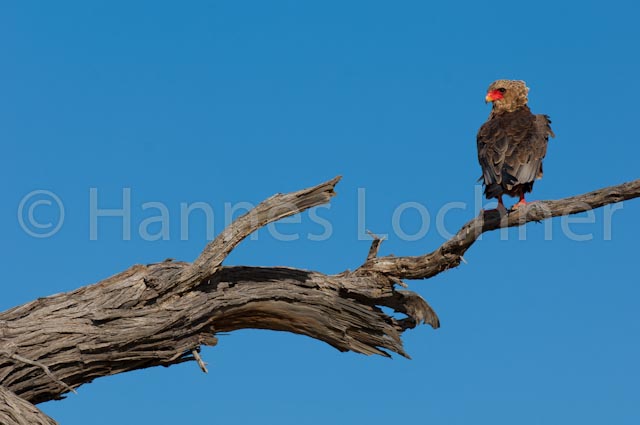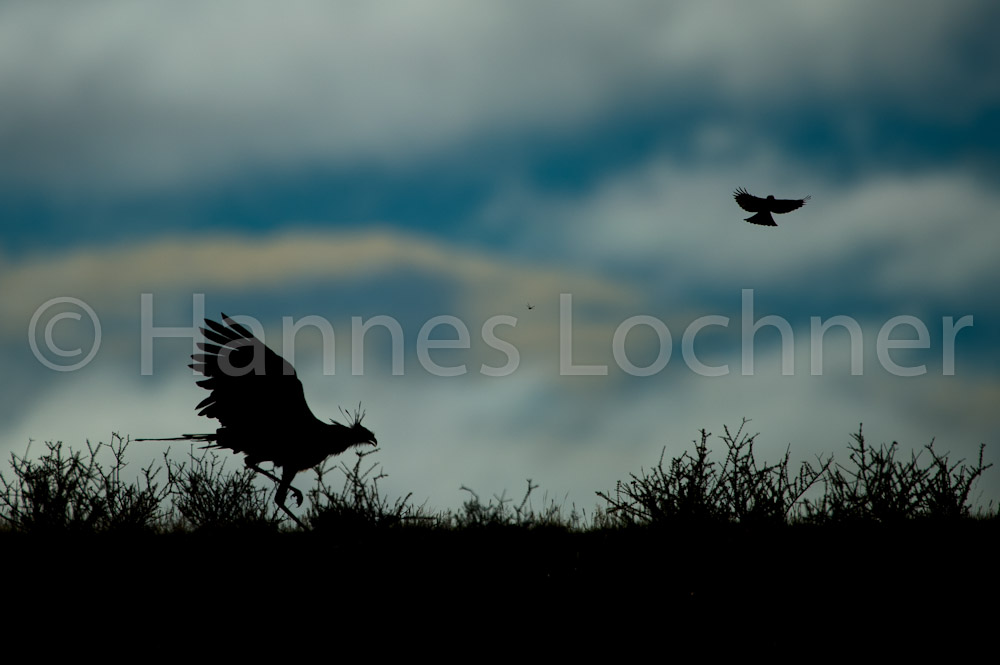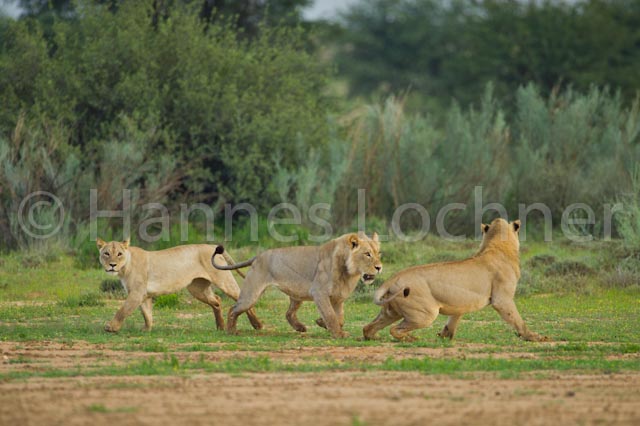Good afternoon everyone… I love interactions between animals. Here a Black-backed Jackal confronts a Lappet-faced Vulture. The standoff wasn’t very long, after about 10 seconds the jackal ran away, after the vulture opened its wings and looked very intimidating! Lappet-faced Vultures, perhaps more than any other vulture, will on occasion attack young and weak living animals and raid the nests of other birds. Enjoy and see you on monday! Have a great weekend.
Monthly Archives: April 2011
Starry starry night!
 Good morning everyone… The last couple of days was very very cold and feels like the winter has arrived a bit early! This morning was 4ºC and yesterday 3ºC. Hopefully it would warm up a little in the next couple of days! My vehicle don’t have windows and it feels like the wind is blowing through everything! I took this photo of the milky way last night, with a camel-thorn tree silhouette. Enjoy! Cheers till tomorrow.
Good morning everyone… The last couple of days was very very cold and feels like the winter has arrived a bit early! This morning was 4ºC and yesterday 3ºC. Hopefully it would warm up a little in the next couple of days! My vehicle don’t have windows and it feels like the wind is blowing through everything! I took this photo of the milky way last night, with a camel-thorn tree silhouette. Enjoy! Cheers till tomorrow.
Serendipity!
Good afternoon everyone… I bumped into this kingfisher at Samevloeiing waterhole. Its been raining a lot and there are pools of water everywhere. The Fork-tailed Drongos did not enjoy him at all, and were bomb-dropping him the whole time! This is a small kingfisher, 13 cm in length. The bill is black in young birds and reddish orange in adults, so clearly is this a juvenile. Cheers till tomorrow!
Teenager!
Good morning everyone… Hope you all had a great Easter weekend. Things are getting cold up here in the kalahari, and the animals are normally less active when so cold.
Birdlife on the other hand is always good! Here i share with you a juvenile Bateleur. The Bateleur is a colourful species with a very short tail which makes it unmistakable in flight. “Bateleur” is French for tight-rope-walker. This name describes the bird’s characteristic habit of tipping the ends of its wings when flying, as if catching its balance. Here we have a immature Bateleur, but you can see the beak and feet are changing into the colours of the adult. Immature birds are brown with white dappling and have greenish facial skin. It takes them seven or eight years to reach full maturity.
Cheers till tomorrow!
Secretary-bird vs Bug vs Fork-Tailed Drongo!!
Good morning everyone…Yesterday I drove up to Kij Kij and what was a very quiet and rainy morning turned out to be quite interesting! A Secreray Bird and Drongo was chasing after the same “flying bug/dragon fly”. The Drongo won the battle! You can see the dragonfly exactly in the middle of the two birds.
These are aggressive and fearless birds, given their small size, and will attack much larger species, including birds of prey if their nest or young are threatened. Cheers till tomorrow!
Ostrich sunset!
Goodmorning everyone… Continuing with the birds today, i share with you the biggest one in the world, the ostrich! It is distinctive in its appearance, with a long neck and legs and the ability to run at maximum speeds of about 97.5 kilometres per hour , the top land speed of any bird. The diet of the Ostrich mainly consists of plant matter, though it also eats invertebrates. It lives in nomadic groups which contain between five and fifty birds. When threatened, the Ostrich will either hide itself by lying flat against the ground, or will run away. In the kalahari they have many predators, like hyaena, cheetah, leopard and lion! They pack a powerful kick and can be very dangerous when cornered!
Juvenile Martial!
Good morning everyone… its birdtime again! Today i share with you one of the biggest birds of prey in the kalahri, the Martial Eagle! These eagles can kill other birds up to the size of a stork, but it more often chooses medium-sized ground-dwelling species such as bustards. In some areas mammals constitute the greater part of its diet, with such species as young jackal and foxes. The Martial Eagle hunts mostly in flight, cicling high above its territory, and stooping sharply to catch its prey by surprise.
Scentmarking…!
Goodmorning everyone!… Im back on the leopards and they are looking as healthy as ever! Here i found the cub of the south scentmarking in her mothers territory, she is about 15 months old and just left her mother, young leopards leave their mothers to find and settle in their own territories or home ranges. Juveniles begin to accompany their mother on hunting trips at just about two to three months old. They start to learn hunting skills through playing pouncing, hiding, stalking, and sneaking up on each other. They practice catching and killing small live animals brought back by their mother before they hunt on their own.
Black & White Friday!
Good afternoon everyone… This is one of the young males of Samevloeiing and in pursuit of prey! I’ve seen these lions hunt the last couple of months without great success! They still have to fine tune their hunting
skills. Its great fun watching them though! Young lions first display stalking behaviour around three months of age, although they do not participate in hunting until they are almost a year old. They begin to hunt effectively when nearing the age of two.
Take a look and let me know what you think…
The heat is on!
Good afternoon everyone… After the death of Murtu, one of the last big pride males, there is only one big male left in the south. His name is Mufasa and is in the Rooiputs area. Three pride-males died the last 12 months in the south, so there is competition among the younger males, and things are heating up in the Samevloeiing area. Here is two males getting irritated with each other. There is about four young males in this area and they already started to mate with the pride females. There are three females all-together.
Take a look and let me know what you think…









